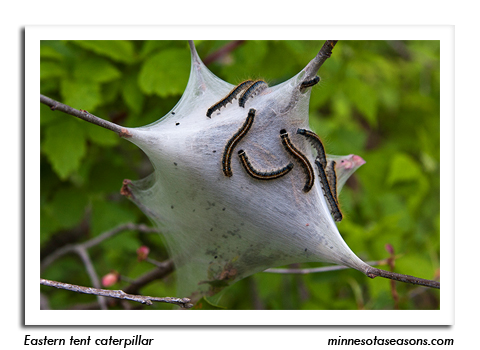
 |
|
|
Fruits
Volume 63 Number 2 Date 05/10/2018 SPOTTED TENTIFORM LEAFMINER - Peak emergence of first brood moths is approaching in southern and central Wisconsin. Cooperator apple orchards in Iowa, Marquette and Racine counties reported high counts of 825-1,025 moths per trap in the past week. Counts elsewhere varied widely from 1-558 per trap. The number of moths captured during the period defined as a "peak flight" is usually in the range of 800-1,200 per trap per week for orchards with a typical STLM population. GRAPE FLEA BEETLE - The spring migration of adults from hibernation sites to grapevines began about two weeks ago. Scouting twice weekly is suggested beginning at the bud swell stage and continuing until shoot growth has reached three inches, or through late May. Feeding by the overwintered adults can stunt shoot growth and cause yield loss. Plants in the border rows of vineyards are at heightened risk of damage by the migrating beetles. Treatment is justified if more than 5% of buds are damaged. REDBANDED LEAFROLLER - Moth activity accelerated from May 3-9, with counts ranging from 2-188 RBLR per trap. Peak flight activity, and corresponding high trap counts, has likely occurred in southern and central orchards. The first RBLR caterpillars generally appear around petal fall. EASTERN TENT CATERPILLAR - Larvae have been active since April 24 and their 2- to 3-inch tents are becoming noticeable on apple, ornamental crabapple and wild cherry trees. Removal of the small tents by hand or with a tool during the next two weeks will prove most effective in reducing defoliation. GREEN FRUITWORM - Apple growers planning to apply a Bt product (i.e., Agree, Deliver, Dipel) between tight cluster and bloom for control of green fruitworm or other leaf-feeding caterpillars are reminded that most formulations persist on foliage for only a few days following application. Because Bt must be ingested by larvae to be lethal, it is imperative to confirm the presence of caterpillars through scouting terminals and blossoms and treat only if temperatures are warm enough for their activity. Post-treatment scouting for larvae is recommended to determine if a second application is needed. The effectiveness of Bt diminishes at petal fall as feeding by most early-spring caterpillar pests subsides. -- Krista Hamilton, DATCP Entomologist 




|
|
|